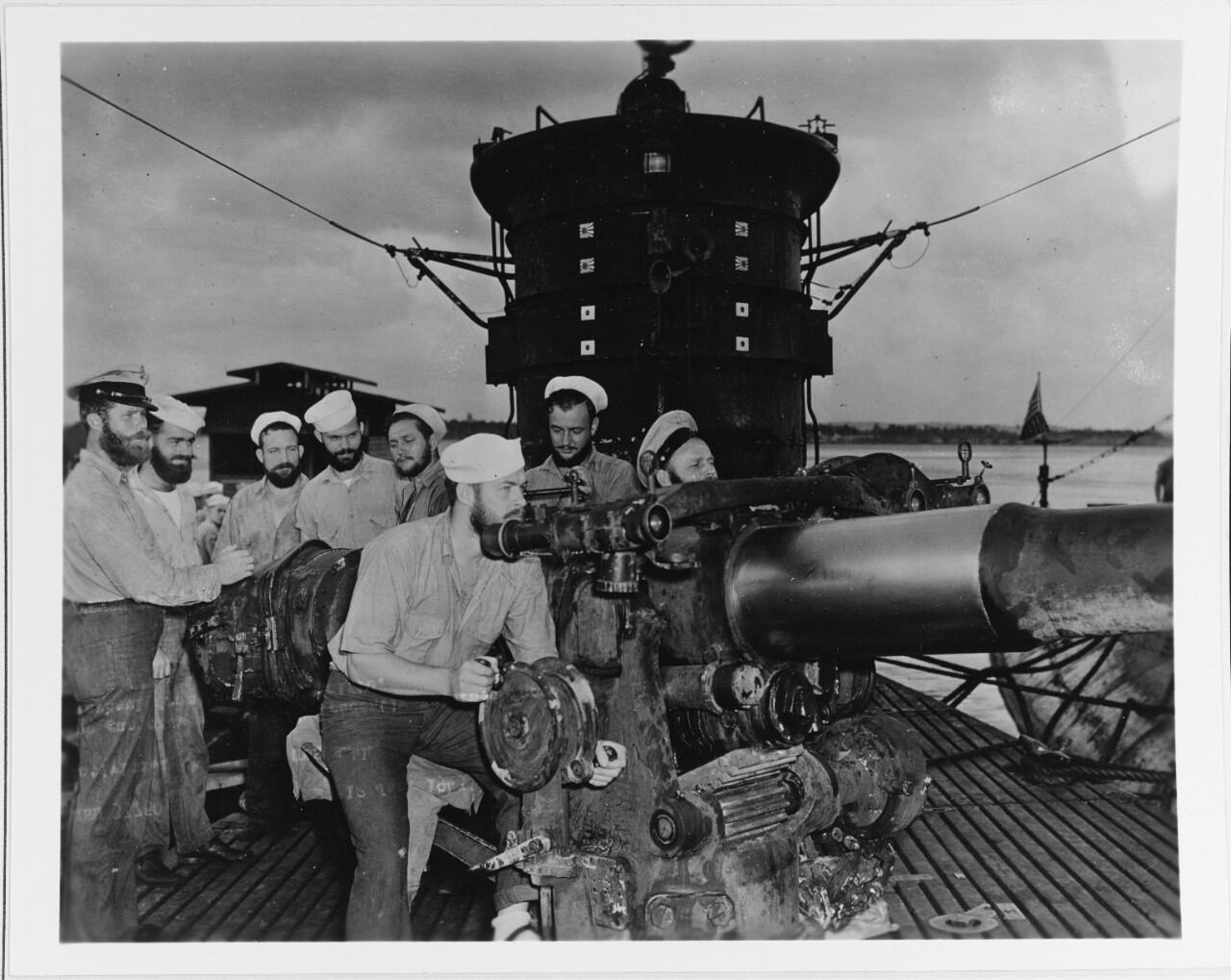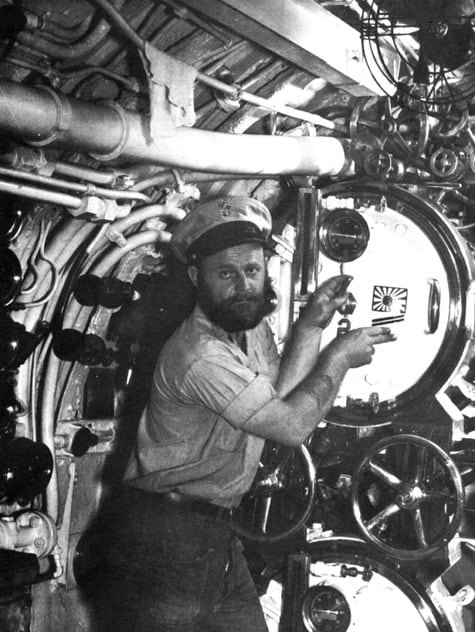On Aug. 7, 1942, U.S. Marines landed on the Solomon island of Guadalcanal, the first major American offensive since the Dec. 7, 1941 Japanese air attack on Pearl Harbor drew the United States into World War II.
That assault, which quickly secured the airfield that Japanese forces were constructing there, took them completely by surprise. But within days Japanese troops were gathering all the local resources they could at and around Rabaul, striking back in what would ultimately amount to a six-month campaign marked by one dramatic surprise after another.
The next reversal of fortune occurred on the night of Aug. 9, when Vice Adm. Gunichi Mikawa, commander of the Eighth Fleet aboard his flagship, heavy cruiser Chokai, directed a small armada to slip down the island chain the Allies called “The Slot.” There, off Savo Island, Mikawa’s ships caught the Allied naval forces astonishingly off guard.
The nighttime attack resulted in a heavy blow for the Allies, with the sinking of U.S. heavy cruisers Astoria, Quincy and Vincennes and the Australian heavy cruiser Canberra. A piece of the heavy cruiser Chicago’s bow was torn away by an enemy torpedo, and on Aug. 9 the USS Ralph Talbot suffered heavy damage.
The attack cost the Americans 1,023 dead and 709 wounded, while the Australians suffered 84 killed and 109 wounded. The Japanese, meanwhile, suffered 111 dead and wounded.
Satisfied with the havoc he had wrought, Adm. Mikawa retired northwest, leaving it to history to ponder whether or not he, like Vice Adm. Chuichi at Pearl Harbor, might have achieved a more decisive victory if he’d taken the risk of remaining a bit longer to dish out further punishment. Instead, he led most of his ships back to Rabaul.
Unknown to the Japanese, however, one remaining hazard awaited them: a small, obsolescent submarine the U.S. Navy designated S-44.

Obsolete Yet Effective
With its keel laid in 1921 and commissioned on Feb. 16, 1925, S-44 weighed in at 850 long tons surfaced, with a surfaced speed of 14.5 knots and 11 knots submerged. It normally carried 42 officers and men, a 4-inch deck gun and four torpedo tubes for a total of 12 unreliable Mark 10 21-inch “tin fish.”
Elderly though they were, these “Sugar Boats,” as they were dubbed, were still serving around the world when Pearl Harbor was attacked. In the following months, a newer generation of subs were dispatched to replace them, one by one, while those crews waiting their turn did their best to make due with what they had in the increasingly obsolete boats.
Despite this, S-44, skippered by Lt. Cmdr. John R. “Dinty” Moore, experienced some rare success in the early days of the war — sinking the repair ship Shoei Maru in May 1942, and, in consequence, indirectly causing the loss of the IJN minelayer, Okinoshima. The following month the Sugar Boat sank the converted gunboat Keijo Maru.
By August, the veteran crew found itself on its third wartime patrol.
The S-44 was plagued by a faulty engine and frequent oil leaks, but nevertheless its crew kept it going with ingenuity and seamanship.

The S-44 Has its Moment
In the early hours of August 10, the S-44 was patrolling around Kavieng Harbor, an important staging base for the Japanese Navy, when Moore spotted two cruisers silhouetted by the sun, followed by two more.
This was Rear Admr. Aritomo Gotō's victorious Cruiser Division Six, whose heavy cruisers had contributed to the destruction during the Savo scrap the night prior.
For roughly five minutes Dinty Moore maneuvered to get into a good position as the range closed. By 0808 hours the trailing warship was 900 yards away.
Moore emptied all four torpedo tubes.
“We were close enough to see [them] on the bridge using their glasses,” Moore later said, but the phenomenal success they’d just enjoyed probably rendered the lookouts less attentive than they should have been.
Thirty-five seconds after its release, the first torpedo hit just starboard of Kako’s No. 1 turret. Two others followed suit.
“Evidently all her boilers blew up,” Moore reported. “You could hear hideous noises that sounded like steam hissing through water. These noises were more terrifying to the crew than the actual depth charges that followed.”
All of Kako’s portholes had been left open. Five minutes after being hit the cruiser rolled over to starboard and sank 130 feet off Simbari Island.
Although it had emerged from the Savo battle unscathed, 68 of Kako’s crew died on its homeward voyage. Its sister ships, meanwhile, rescued 649 survivors, including Captain Yuju Takahashi.
As S-44 submerged and discretely withdrew, its crew celebrated a signal victory. Besides depriving the enemy of what would otherwise have been a clean sweep, the undersized “Sugar Boat” had sunk the heaviest Japanese warship thus far in the war. There would be scores more, a remarkable percentage of which would fall victim to American submarines.
Sadly, S-44 would not be around to see it.
After a fourth patrol in September, S-44 returned to the U.S. for an overhaul and then embarked on a fifth patrol into the North Pacific, between Attu and the Kuril Islands.
On the night of Oct. 7, 1943, S-44 was surfaced and closing in on what Lt. Cmdr. Frances Elwood Brown identified as a Japanese freighter, only to find himself dueling head-on with Ishigaki, an anti-submarine vessel whose three 4.7-inch guns quickly overwhelmed S-44′s deck gun.
With their battered boat unable to dive, some crewmen produced a white pillowcase in token of surrender, but the Japanese either didn’t see it or didn’t care. Only eight survivors were rescued by the Japanese, and only two men, Ernest A. Duva and William F. Whitemar, were liberated from the Ashio Copper Mines to give testimony of gallant S-44′s last moments.




